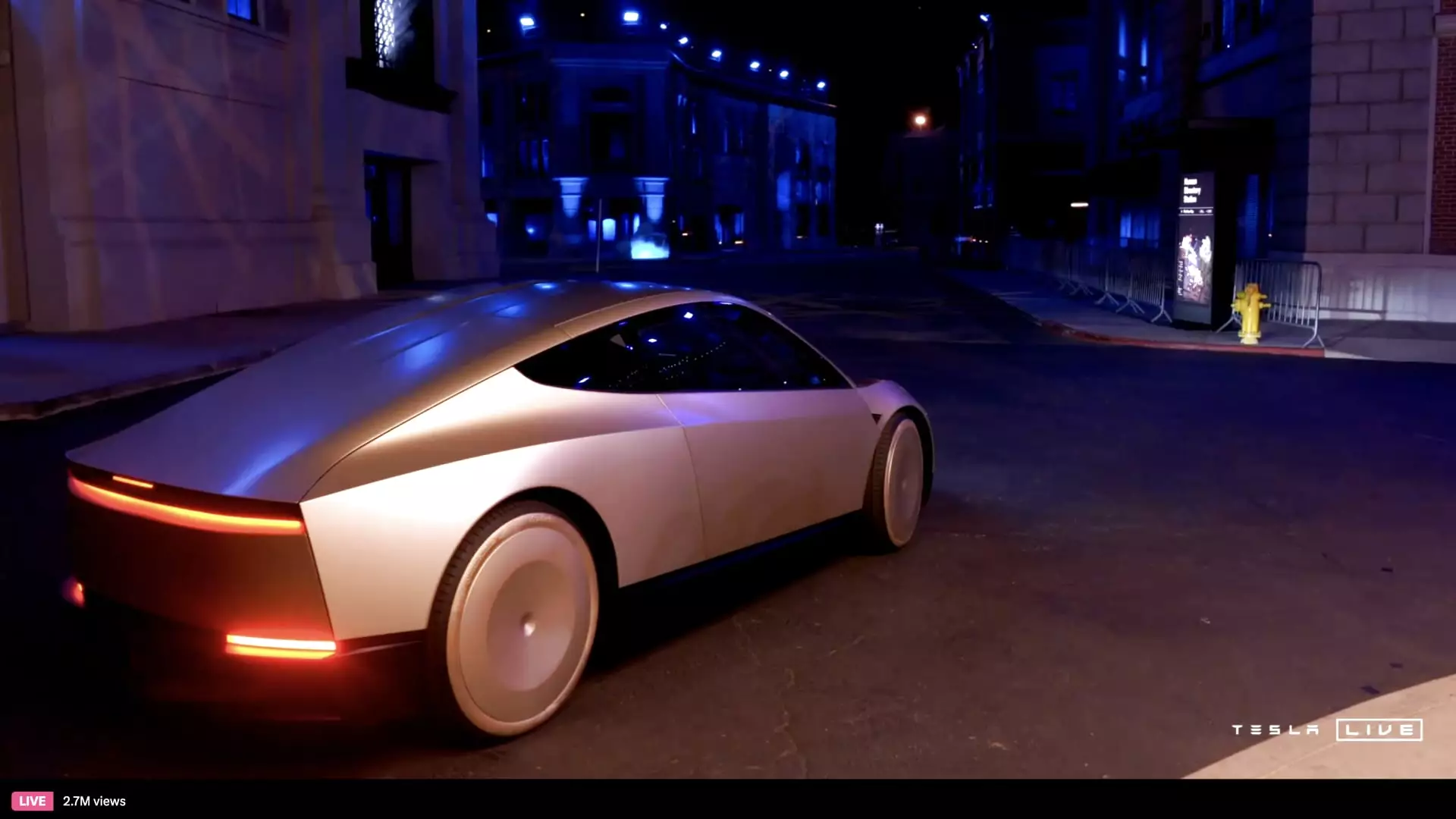In a highly anticipated event, Tesla’s CEO Elon Musk revealed the company’s vision for autonomous transport with the unveiling of the Cybercab. This announcement comes a decade after repeated promises of driverless vehicles that still flutter between aspiration and reality. Musk’s presentation encompassed a sleek, futuristic silver two-seater devoid of both steering wheels and pedals, a bold symbol of Tesla’s commitment to the future of mobility. Yet as optimism pulsates, skepticism lingers, provoking a critical exploration of Tesla’s trajectory in the realm of self-driving technology.
At the event held at Warner Bros. studios in Burbank, California, Musk showcased his flair for theatrical presentations. However, the hour delay before he took the stage raises questions about the feasibility of Tesla’s ambitious schedules in the past. Musk declared that there were 21 Cybercabs present at the venue and hinted at a broader production plan, albeit without specific details on manufacturing locations. Nevertheless, he emphasized that the Cybercab would be priced below $30,000 and aimed for production before 2027, instituting a timeline that feels reminiscent of past promises unfulfilled by the company.
During his announcement, Musk elaborated on the expected capabilities of Tesla’s Full Self-Driving (FSD) technology. He indicated aspirations for a fully autonomous experience, showcasing the optimism rooted in his vision. However, it is essential to scrutinize this bold outlook, especially in light of the FSD’s current status, which still requires human supervision. The label “supervised” attached to the product name does signal progress, yet echoes previous declarations of reaching full autonomy that ultimately fell flat.
The excitement surrounding the introduction of the Cybercab is juxtaposed with an urgent need for realism regarding FSD’s limitations. Musk expresses confidence that unsupervised FSD will be operational in Texas and California in the upcoming year. This ambition stands in stark contrast to previous timelines, such as the prediction made in 2015 that full autonomy would be realized within three years. The resultant pattern of recurrent missed deadlines establishes a precedent that fuels doubts about the reliability of Tesla’s pronouncements moving forward.
Moreover, Musk’s mention of the Robovan, designed to accommodate 20 passengers or transport goods, introduces yet another layer to Tesla’s autonomous strategy. While inductive charging promises a futuristic convenience, it also presents additional engineering challenges. Public reception will likely hinge on the efficacy of these innovations compared to existing forms of transportation.
The history of Musk’s claims about Tesla’s driverless ambitions emphasizes a potential pitfall of overpromising in a technological landscape characterized by rapid advancement yet daunting complexity. For instance, the expectation set in 2019 regarding one million robotaxi-ready vehicles by 2020 appears to be a naive overestimation. Musk’s assertion that investors who doubt Tesla’s progress in autonomy should reconsider their investments carries a dual message; while it seeks to galvanize confidence, it risks cultivating disillusionment among stakeholders whose patience wears thin under the weight of unmet expectations.
Critically assessing Musk’s statements provides context for understanding the hyper-optimistic atmosphere that has become synonymous with Tesla’s public persona. As the presenter leaves the stage, the encouraging visions contrasted against history of missed targets create a wound that pulsates behind the surface glamour. The gleaming promise of a glorious future is tempered by the realities of what has come before.
Musk’s latest announcement regarding the Cybercab and Robovan indicates an ongoing commitment to the autonomous vehicle frontier. Yet one must ask whether the enthusiasm surrounding these endeavors translates to practical, reliable consumer products. As the automotive world watches, Tesla must navigate the thin line between innovation and credibility. The road to autonomy remains fraught with challenges that extend beyond technological hurdles. A transparent dialogue and responsive action towards these challenges will ultimately dictate Tesla’s future presence in an industry that continues to evolve at a breakneck pace.

Leave a Reply